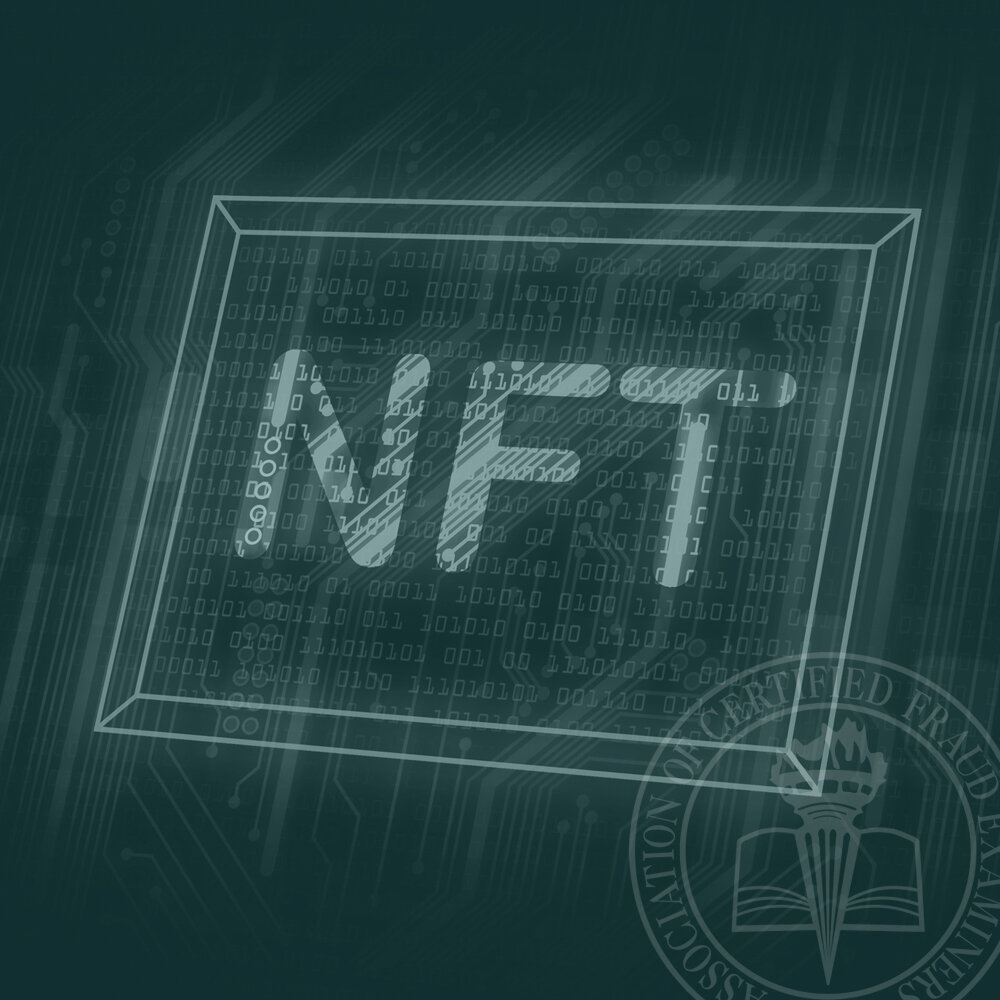Painting a New Landscape: NFTs and Art Fraud
/GUEST BLOGGER
Liza Ayres
Contributing Writer
The sound of one of Christie’s virtual auction bells in March symbolized a new era in the art world. A digital artist known as Beeple sold a non-fungible token (NFT) that represents his art piece “Everydays: The First 5,000 Days” for $69.4 million, an action unprecedented for not only major auction houses, but also for cryptocurrency and artists of all kinds.
Christie’s said the sale was the first time a digital-only artwork was offered with an NFT that guaranteed its authenticity. Additionally, Beeple’s sale also marked the first time cryptocurrency was used to pay for an artwork at auction. Beeple, whose real name is Mike Winkelmann, said in a statement released by Christie’s, “Artists have been using hardware and software to create artwork and distribute it on the internet for the last 20+ years but there was never a real way to truly own and collect it. With NFTs that has now changed. I believe we are witnessing the beginning of the next chapter in art history, digital art.”
As the high-end art market modernizes to fit the developments and demands of the technological age, scammers are not far behind. Anti-fraud professionals are keen to keep a close eye on the evolution of NFTs and their fraud implications as they emerge into the public consciousness and into luxury marketspaces.
What exactly are NFTs?
NFTs are electronic identifiers that allow for anything that can be digitally represented, such as pictures, videos or music, to be enclosed in a format that can be traded, stored or authenticated without needing to turn to a centralized authority or gatekeeper. In this way, NFTs have been referred to as “bitcoin for art.”
Once an NFT is created, it can be digitally traced forever. Moreover, an NFT cannot be duplicated, so the blockchain onto which an NFT’s details are recorded can confirm the authenticity of it. As NFTs burst into the art realm, they can also be used to solve a problem that has been central to digital collectibles: how to claim ownership of something that can be easily and endlessly duplicated. However, the boom in this type of technology brings with it a crowd of people eager to take advantage of NFTs’ popularity, non-tangibility and relative newness.
Art theft and NFTs
The NFT collecting craze has incentivized some scammers to claim works of art as their own and sell them online at high prices. Several artists have complained that their publicly viewable work is being transformed into NFTs by unknown sources without their permission. Some of the hackers engaging in this practice have marketed the NFTs through anonymous Twitter accounts, which makes it difficult to track down the fraudsters. The artists whose work has been stolen have reported feeling cheated by the absurd price point at which the scammers have attempted to sell the work.
The process of taking other people’s work and turning it into an NFT has already been dubbed “tokenization,” and there are even some services that monetize the tokenization of online content. This phenomenon poses big questions for the future of art. While some people see this as the evolution of 21st-century art, others see it as direct theft that threatens the livelihoods of artists.
Many content creators are now considering measures like locking their public social media accounts, which is where they’ve relied on promoting their work to the public. Others are seeking recourse for copyright violations, but trying to remove an NFT with stolen work is difficult considering blockchain is a permanent record.
NFTs and potential money laundering
Because of the fuzziness surrounding ownership, tangibility and provenance, NFTs add even more secrecy to an already challenging market, making them a logical way to cover money laundering. As NFTs gain popularity in the art world, financial institutions have realized the ease with which funds can be moved through NFTs, both legally and illegally. As assets, NFTs can be incredibly valuable because of their non-transferability on the blockchain, which makes them appealing for fraudsters.
All of this comes to an industry that has historically been susceptible to criminality due to international high-value transactions where some artists and buyers have always been able to choose to be anonymous. Even so, there is an established canon in traditional auction markets for determining price based on material, condition and era. Because digital art is newer and more subjective, dealers and sellers can determine the value of a piece with little context or background. Because of this secrecy, people have begun using NFTs to launder money.
Now, financial institutions are faced with the challenge of deciding if NFTs should be seen as pieces of art or as security assets, the latter of which would entail additional regulations and legal ramifications. Because of the current lack of concrete determinations, criminals have found opportunities to use the new technology to their advantage. Fraudsters will likely develop new schemes that anti-fraud professionals, art market experts and financial employees might not even be able to prepare for right now. Learning about NFTs and staying up to date with their evolution and uses can help with identifying and mitigating potential fraud.



